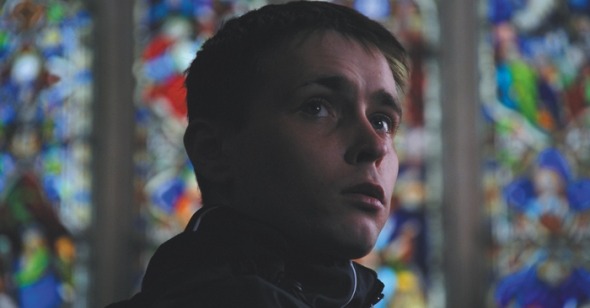Young Blood
By Kristi Mitsuda
Better Things
Dir. Duane Hopkins, UK, no distributor
British filmmaker Duane Hopkins studied as both a photographer and painter, and this becomes abundantly clear upon viewing his elusive and evocative debut feature, Better Things. While its setup—numerous characters populate interlaced narratives—might make you reflexively shrink at the possibility of yet another melodramatic, everything’s-connected coming together, the film eschews overdetermined genre conventions. At once abstract and impressionistic, if anything, it lists too far in the opposite direction. By opening with a series of static shots and cutting deliberately, disorientingly from one storyline to the next, Hopkins announces his intention to limn a specific environment, and the people in it, through textural detail, mood, and landscape rather than plot, dialogue, or character development.
Set in the English Cotswolds, Better Things seeks to provide an alternative view of the rural community celebrated among tourists for its picturesque quaintness; illuminated is its double life as a locale where kids casually engage in sex and drugs—neither of which are presented as particularly enjoyable for its adolescent protagonists—as a practical way to fill long, quiet hours of boredom in the countryside. Although many characters comprise a loose circle of friends grieving the loss of Tess (Emma Cooper) to a heroin overdose, the film also incorporates into its overall arc stories revolving around an agoraphobic teenager, Gail (Rachel McIntyre), and an estranged, aged couple, the Gladwins (Betty and Frank Bench).
Narratives are loosely layered one on top of the next; when a specific story unfolds, images from other strands are sometimes integrated into the scene, the individual emanations informing the collective whole. When, for instance, Tess’s boyfriend, Rob (Liam McIlfatrick), confesses to David (Che Corr) his sadness over never seeing her face again, a shot of another female’s profile—David’s girlfriend, Sarah (Tara Ballard)—flashes across the screen, her head leaning against a train window on her way home, backlit by the sun. David had previously seen her off at the station, and this briefly blooming image gives radiant voice to his subjective anguish at similar thoughts of separation.
Untangling Hopkins’s narrative threads presents a challenge, however, and the overlapping stories don’t always cohere subtly enough to add resonance or complexity to an otherwise facile thematic trajectory. Focused on the youthful—coming to grips with perhaps their first close encounter with death—and elderly, Better Things is suffused with concerns over mortality and corporeality; parents and other middle-aged characters are mostly, pointedly, missing from the unfolding. Even in the face of consequences, the teens continue shooting up and exploring illicit substances, though an awareness sets in as one of the gang attempts to enroll in a methadone program; meanwhile, Mrs. Gladwin’s efforts to reconcile with her husband are infused by an unspoken urgency: How much time do they have left together? Gail’s sickly grandmother (Patricia Loveland), her face engraved by time, comes to stay in the family home, her physical disability providing a counterpoint to Gail’s psychological imprisonment, the latter’s fleshly composition making pronounced the effects of being house ridden. And the greenish cast in which the film is permanently steeped conveys an atmospheric decay, in contrapuntal contrast to the surrounding pastoral fecundity.
Compounding the dislocation, rhythmically edited fragments define the film’s structure—characters are shot from a multitude of angles within a single scene, long and medium shots metronomically proceeding to close-ups of heads, hands, torsos—and the rapidly moving parts sometimes lose functional meaning. Better Things then accentuates the headiness via an experimental aural design: As a couple of boys speed down a country road, for instance, ambient sound is suddenly tuned out, and their voices echo in a strange, apart space. White noise or else a single sound—maybe a cupboard being shut—are occasionally amplified, and intimate attention is paid to a record or cassette tape being played; such audio manipulations cast an unsettling mood, creating an internalizing headspace.
Easy as it is to relish the film’s rush of images, it’s difficult to remain truly emotionally engaged by the material. Still, the conceptual intrigue of Better Things almost makes up for its lack of dramatic tension. Hopkins’s artful surface details require substantial development or risk falling into clichés barely masked by stylishness—the movie’s final cross-cut sequences tritely illustrate an embrace of life on the part of one character and death on the part of another—but, at any rate, Better Things undoubtedly portends from its director as much as the title suggests.
